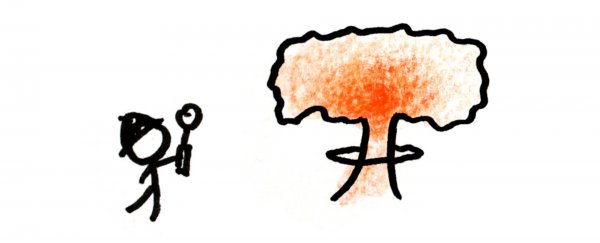
Back in 1996, the Comprehensive Nuclear-Test-Ban Treaty made any kind of nuclear explosion anywhere on Earth illegal. But the agreement isn't in force, because eight key countries still haven't signed *cough* US, North Korea, Iran, Israel, India, Pakistan, Egypt *cough*. So how do we know if certain countries are taking advantage of this stalemate by conducting secret nuclear tests? Don't worry, science has got us covered, as the latest episode of MinutePhysics explains.
Obviously, the biggest sign of a nuclear explosion is huge energy release, mostly in the form of blast waves. These blast waves radiate outwards at the speed of sound through air, water, or rock, so if you detect them in multiple places, you can triangulate exactly where and when a blast occurred.
That all sounds pretty simple, but it actually requires an incredibly complex monitoring system. In the air, any atmospheric explosions will be picked up by a network of infrasound detectors stationed above Earth. And in the water, super-sensitive microphones known as hydro-acoustic sensors floating just above the ocean floor are continuously listening out for any strange sounds.
In both these places a nuclear blast would be pretty unmissable. But below ground things get a little harder, because it just so happens that earthquakes can also release explosion-type amounts of energy.
But scientists are getting better at pinpointing anything out of the ordinary… for example, large disturbances beneath North Korean in 2006, 2009 and 2013. Which were correctly concluded to be the result of nuclear explosions. The problem is that in order to actually verify a nuclear explosion contained below ground, we would need scientists in the area to investigate further. And until the treaty is signed, those inspection teams will remain illegal.
Watch the episode of MinutePhysics to find out how we can stay on top of any suspicious nuclear activity, and why it's so important to get the whole on board with the Comprehensive Nuclear-Test-Ban Treaty.
